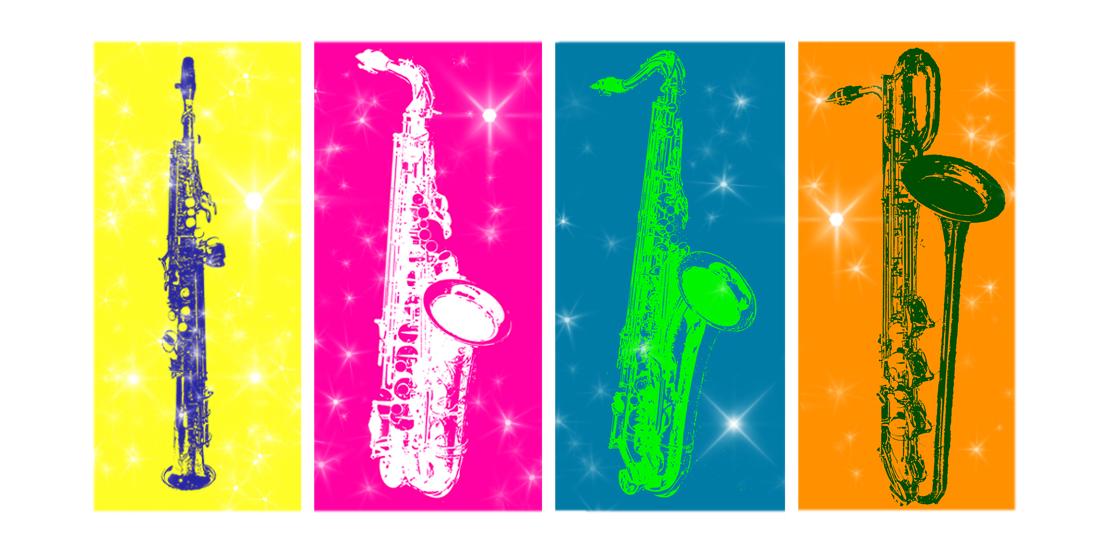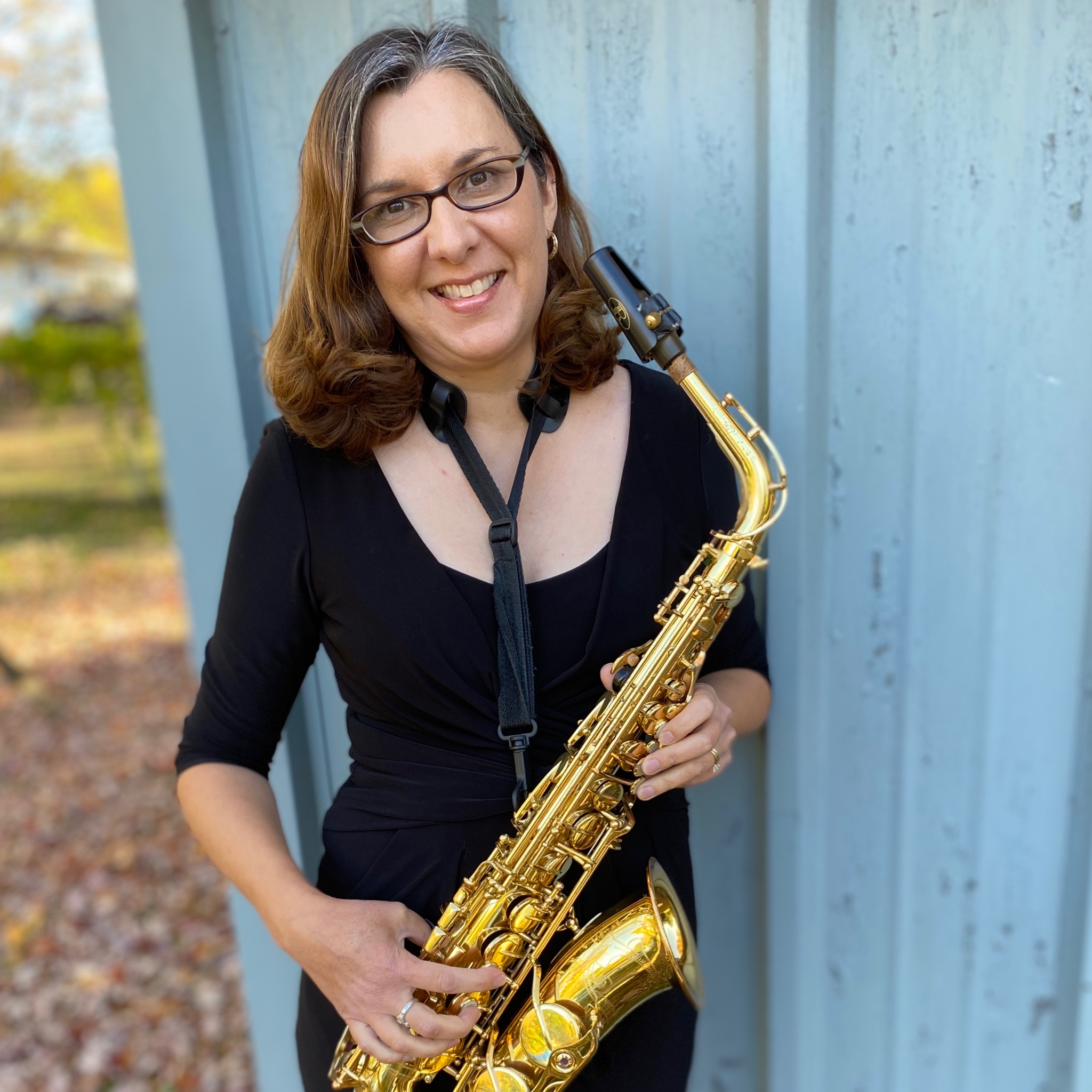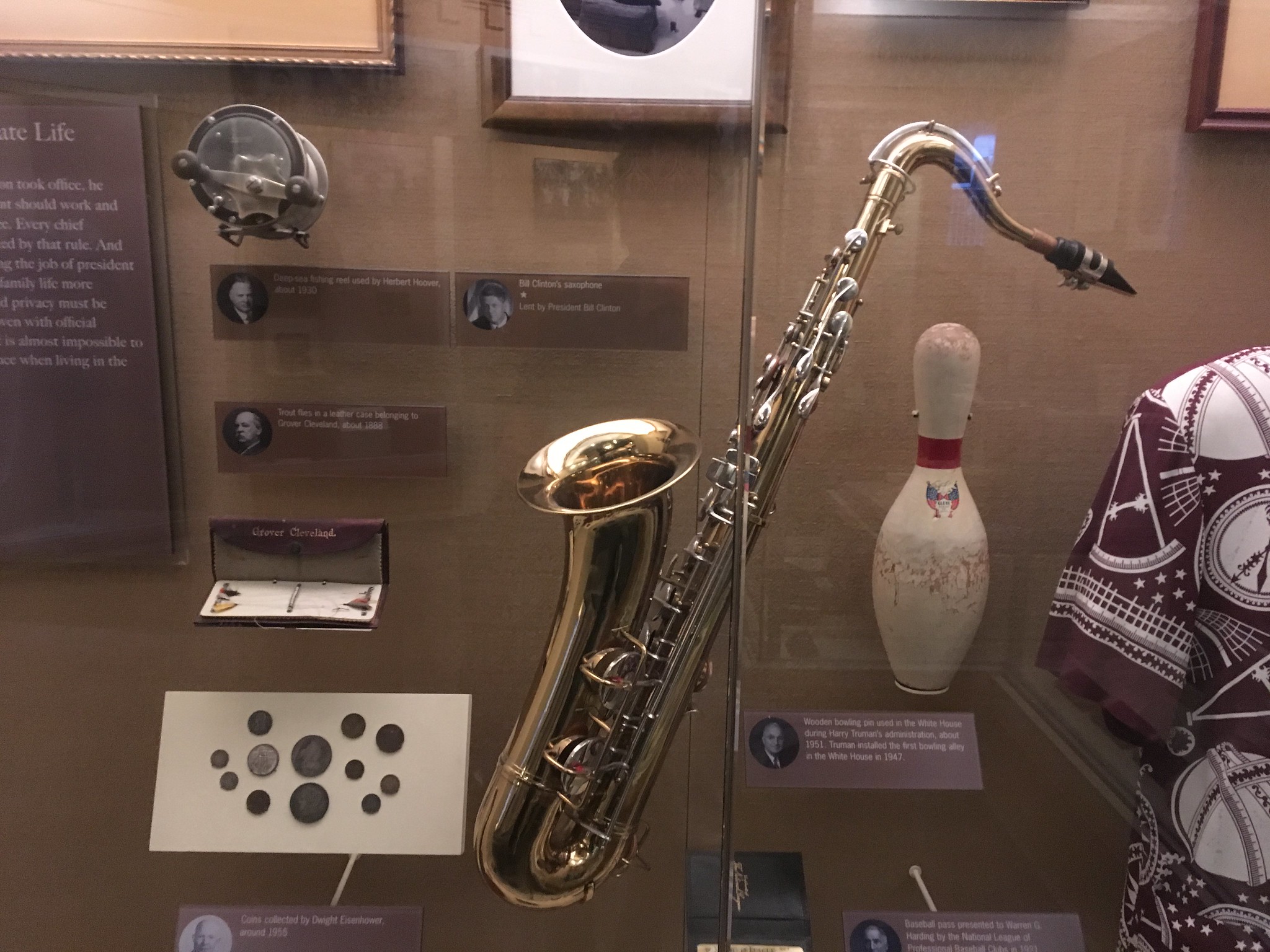In a typical Elementary, Middle, or High School band, we usually see alto, tenor, and baritone saxophones. Many people are not aware that there are many other types of saxophones in the saxophone family, in various different sizes and tone qualities. In this article, you will learn a little about each member of the saxophone family.
What is a Saxophone?
The saxophone is a single-reed woodwind instrument. They are made from brass and are sometimes plated with gold or silver. All saxophones are conical in shape, including the straight soprano. The saxophones that are commonly played today are all pitched in either Bb or Eb.
Parts of a Saxophone
Most saxophones have three parts, which are the mouthpiece with ligature, neck, and body. There are a few exceptions to this, such as the straight Soprano and Sopranino, which do not have a separate neck. The ligature mentioned previously holds the reed on the mouthpiece. All saxophones require either a neckstrap or harness, in order to be held correctly. When purchasing a saxophone you will also need several functioning reeds, a reed case, a cleaning swab, and cork grease, along with a quality mouthpiece, ligature, and protective case. When choosing a student model saxophone for a beginner, a mouthpiece, ligature, neckstrap, and cork grease are usually included with the saxophone.
Brief History of the Saxophone
Compared to many instruments, the saxophone is fairly young, having been invented in the 1840s, by Adolphe Sax. After studying at the Brussels Conservatory of Music, Mr. Sax decided to create an instrument that blended the best qualities of woodwind and brass instruments. The saxophone went through many modifications to resemble the instrument that we know today. The modern saxophone has a metal body but uses a cane reed to produce sound. The saxophone of today fulfills Mr. Sax’s wish of being able to project sound like a brass instrument, with the flexibility of a woodwind.
Originally, Adolphe Sax designed 14 saxophones, in C, F, Bb, and Eb. The instruments in C and F were largely created to be played in orchestras, while the Bb and Eb saxophones were invented for use in bands.
The Four Most Commonly Used Saxophones Today
The four saxophones in this section can all be heard in saxophone quartets, saxophone ensembles, concert bands, marching bands, military bands, jazz bands, and rock bands. The smaller the instrument, the higher the sound, and conversely, the larger the saxophone, the lower the sound. The four saxophones below are listed smallest (highest) to largest (lowest).
Soprano Saxophone
The soprano saxophone is in Bb and is played using a neckstrap. Soprano saxophones are manufactured as straight instruments (similar in appearance to a Bb clarinet), or curved like a miniature alto saxophone. Soprano saxophones sound an octave higher than tenor saxophones, which are also in Bb.
The timbre of a soprano saxophone is unlike any of the other saxophones. It is a bit brighter and has been compared to the tone of an English horn or oboe. Soprano saxophones are not widely used in concert bands. There are specific wind band pieces written with soprano saxophone, and typically the 1st chair alto saxophone player will switch to soprano for that particular piece.
Alto Saxophone
The alto saxophone, in Eb, is played using a neckstrap. Alto saxophones are one of the most popular members of the saxophone family and sound an octave higher than the Baritone Saxophone, which is also in Eb. Typically when children are first learning to play the saxophone, they start with alto. It is widely used in all genres of music. The one exception would be orchestral music. Since the saxophone was invented fairly recently, many famous orchestral pieces were already written. Even after the saxophone was widely accepted, many composers refused to recognize it as an instrument worthy of being played in an orchestra. There are a few well-known orchestral pieces written with saxophone, including Pictures at an Exhibition, by Modest Mussorgsky, which includes alto saxophone, and Bolero by Maurice Ravel, which includes soprano and tenor saxophones.
Tenor Saxophone
The tenor saxophone is in Bb and is the second most popular saxophone today. It is commonly seen everywhere that you see alto saxophones. Depending on the age and size of a child, and the availability of instruments, schools will sometimes start a child on tenor saxophone instead of Alto. Tenor saxophones are typically played using a neckstrap, but sometimes performers will choose to use a saxophone harness. Like all saxophones, tenors can be played with a brighter sound for jazz or rock styles, and with a warmer, darker sound for classical playing.
Baritone Saxophone
The baritone saxophone is in Eb and is the largest saxophone that we commonly see. Baritone saxophones are an octave lower than alto saxophones. Now, most performers choose to use a saxophone harness when playing a baritone saxophone. Because of the weight of the instrument, a harness takes the weight off of a performer’s neck and distributes it more evenly across the body.
Less Common Saxophones
Sopranino Saxophone
The sopranino saxophone is the smallest instrument in the saxophone family. It is pitched in Eb, sounding one octave higher than an alto saxophone. Sopranino saxophones, like soprano saxophones, can either be straight or curved. Sopraninos are still being produced, and are typically only used in a saxophone ensemble. Sopranino saxophones have very fussy intonation and are quite difficult even for a professional saxophonist to play in tune.
C Melody Saxophone
C melody saxophones were produced for use in the home. They have a curved neck, similar to a tenor saxophone, and are in between the size of an alto and tenor saxophone. Because C melody saxophones are pitched in the key of C, one could play a C melody along with piano sheet music. Entire families enjoyed making music together, singing along with popular songs, accompanied by a C melody and piano! The intonation of C melody saxophones is not reliable, and they stopped being produced in the 1920s. They are still available today, for fairly inexpensive prices, in antique stores and from private collectors.
Bass Saxophone
Bass saxophones, in Bb, are an octave lower than a Bb tenor saxophone. Bass saxophones were very popular in the early 1900s. Rationing of brass during WWII halted the manufacturing of many saxophones, including the bass. After WWII, the bass saxophone never regained the popularity it had in the 1920s and 1930s, but they are still being manufactured. Today, Bass Saxophones are a fixture in most saxophone ensembles.
Contrabass Saxophone
The contrabass saxophone, in Eb, is pitched an octave lower than an Eb baritone saxophone. At nearly six feet tall, the contrabass typically rests in a special stand, while being played. The performer has to stand, often on a stool, to play the contrabass. Contrabass saxophones are often used in saxophone ensembles, and add a unique timbre to the group’s sound.
The eight saxophones mentioned here have a range of nearly seven octaves, each with distinct personalities and nuances.
“If you like an instrument that sings, play the saxophone.” - Stan Getz




